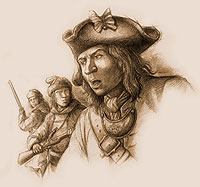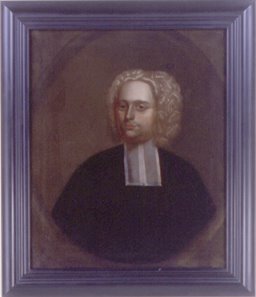Deerfield.

This is coolbert:
Update on the newly opened American Indian Museum. There are weapons and implements of war on display in the museum. But they are implements of war acquired from the "white man". Muskets, rifles, pistols, etc. "White man's weapons" used by American Indians in their battles with the "white man". Implements of war as used by American Indians in warfare among themselves are NOT on display. That side of American Indian life is just not chosen for display.
Interesting program on National Public Radio [NPR] this morning about Deerfield village in Massachusetts. Deerfield is a small hamlet in the western part of Massachusetts. The village is about three hundred years old and is the site of a very prestigious prepartory academy used by the elite of old New England society to prepare young men for positions of leadership.
Deerfield is now making an effort to reconcile differences with the descendants of the American Indian tribes that occupied the area prior to the coming of the "white man". They are meeting with the Americans Indians for reconciliation. And this is all well and good. And is to be commended and praised.
It should also be kept in mind what happened to Deerfield village three hundred years ago.
The settlement of about two hundred English speaking settlers was attacked by a large band of Algonquin Indians commanded by French colonial officers. This war party proceeded south to attack Deerfield at the behest of the French, as the village was built on land contested at the time between the French and English colonial powers.
The results of this raid were apocalyptic for Deerfield village. A sentry fell asleep and allowed the war party to attack without warning. All the homes in the village were burned, a goodly number of the adult men were killed, and the survivors, men, women, children, numbering around one hundred eleven, forced marched back to Quebec. This all occurred in the winter time, at the harshest time of the year. Along the way, those unable to keep up with the forced march were executed. Those that survived the forced march were kept in various states of captivity for many years afterward. Some were kept by the Algonquin and ended their lives living among the Indians. Some were ransomed by other British colonists and did return back to Massachusetts. Some ended up growing up as French Canadians and did not return to the Plymouth colony. A very sad fate indeed. An account of this ordeal is most harrowing:
"Just before dawn, February 29, 1704, a band of 300 French and Indians attacked the Massachusetts frontier village of Deerfield.
The attackers had killed 49 villagers, . . . The surviving 111 people, many of them small children, faced a forced march of 300 miles through the wilderness, in the worst of winter, to Canada.
It resembled the Bataan Death March of World War II . . . The Indians killed those who could not keep pace.
The next day she fell wading a river. An Indian killed her with one stroke of his tomahawk. A hatchet also fell that day on the suckling infant of a neighbor and on an 11-year-old girl.
On March 7, a young woman who had suffered a miscarriage came to Rev. Williams. “Pray for me,” she said, “that God would take me to Himself.” She was anticipating her death which came later that same day.
One of the Indians had carried a four-year-old girl on his back with his pack. When the deep snow made it impossible to carry both, he killed the girl.
Williams had an Indian “master” assigned to him who fed him and provided snowshoes, but regularly threatened to kill him. One morning the “master” awakened Williams to tell him he must run that day because they expected to travel 45 miles. Williams said his aching legs and bloodied feet would not make it.
“Then I must dash out your brains and take your scalp,” the master said.
20 parishioners had died en route, eight weeks after the massacre . . . The Jesuit priests were determined to convert Williams and his parishioners to Catholicism.

Initially, the French treated him well.
“All means were used to seduce poor souls,” Williams wrote. “The Superior of the Jesuits offered me an honorable pension from the King of France if I would stay among them.”
As part of their conversion effort, Jesuit priests baptized children without the consent of their parents.
One priest expressed his compassion by reporting that before the Deerfield Massacre he had instructed the Indians to “baptize all children before they killed them; such was our desire for your eternal salvation, though you were our enemies.”
Persuasion having failed, the Jesuits threatened violence. Williams’ Indian master told him to cross himself and kiss the crucifix. He would be killed if he did not. Williams refused. He lived.
The Jesuits also proselytized the other Deerfield colonists, with little success. Two women on their death beds were denied visitors. The Jesuits reported that they had converted in their final moments and were given the last rites of the Catholic Church.
Finally, after more than two years, in November 1706, the captivity ended. Governor Dudley of Massachusetts paid ransom to the French and sent a ship to bring the colonists home. Fifty-seven captives, including two Williams children, arrived in Boston Harbor, November 21, 1706. Left behind, by her choice, was his daughter Eunice, 10, who later married an Indian and “thoroughly conformed to Indian dress and habits.”"
I wonder if any of this reconciliation will take into account what occurred to the inhabitants of the original Deerfield village?? Personally, I doubt it. Too bad. This is a good idea if done correctly. Quite often, these events just become a forum for more recriminations.
coolbert.

0 Comments:
Post a Comment
Subscribe to Post Comments [Atom]
<< Home